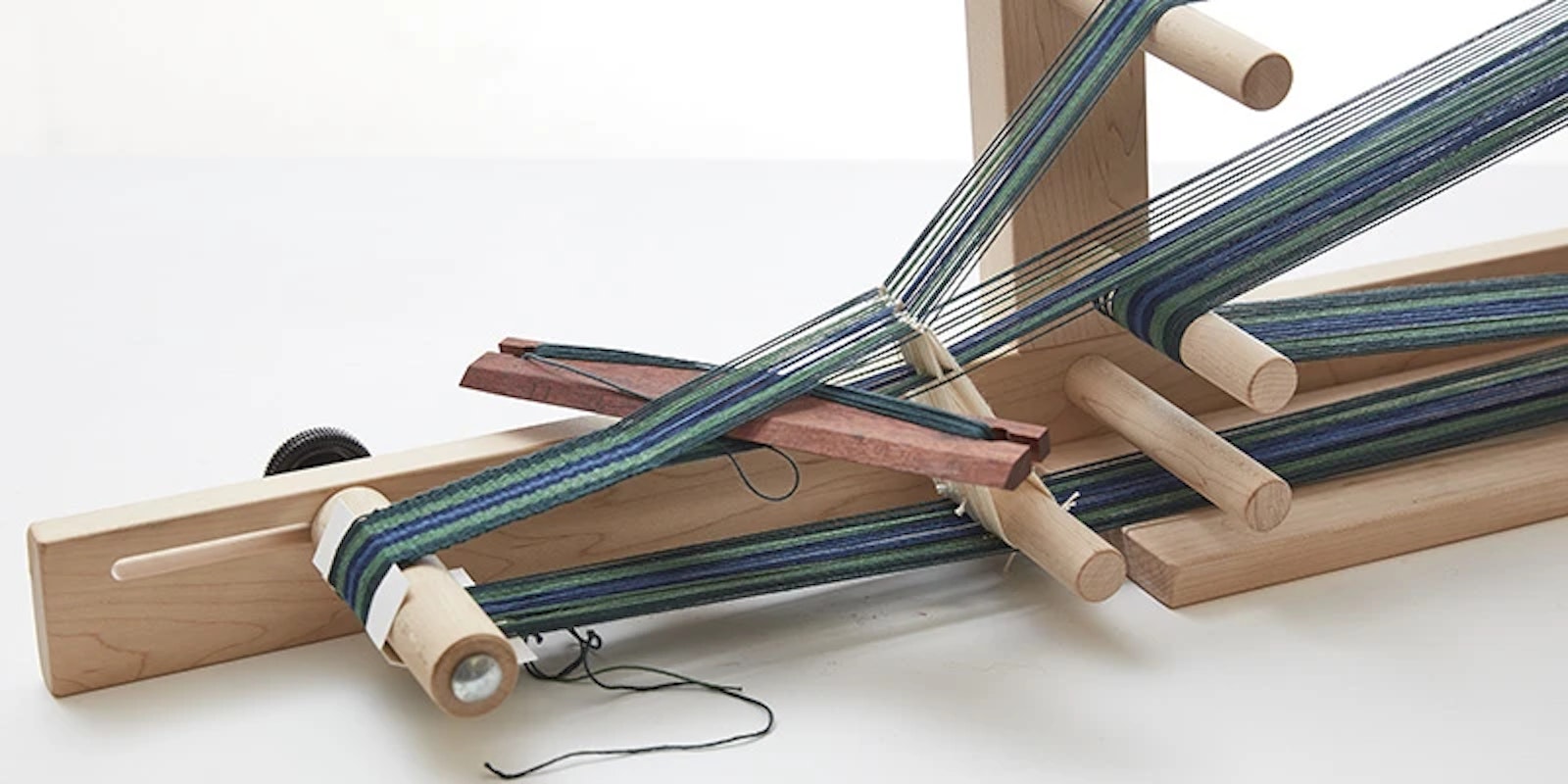
Anything But Plain placemats by
Janet Dawson, from Free

Marjorie Erickson's huck lace
towels from Free Handweaving
Projects for Beginners
Every once in a while, a reader will write to say that handweavers should design their own fabrics instead of following weaving project directions online or in a magazine. While that may be true for very experienced weavers, for the rest of us, the weaving projects and patterns in Handwoven (and the free resources Long Thread Media offers) are truly amazing teaching tools that can help prepare us to design our own fabrics.
In the first place, a beginning weaver does not have a yarn stash. So there's no going to the shelves and lining up a rainbow of colors to choose from, trying this one with that one, thinking no, how about this other one. If you don’t have a yarn collection and you want to design your own handwoven towels, for example, how do you even start? What fiber, what yarn size, what setts, what colors, what weave structure—all of these choices are daunting, and one wrong one affects all the rest.
Making these choices can also be expensive. You may dream up a towel in orange, purple, and turquoise and order the yarns, thread the shafts, and weave the first few inches only to discover that they don’t work together at all the way you thought they would. It takes weaving experience to understand enough about how colors work together to picture a design in your head, order the yarn, choose the weaving draft, and produce a handwoven item that looks the way you thought it would.
Enter the weaving project instructions in Handwoven each one of which can be done as a mini weaving class. What better way to learn about 10/2 pearl cotton than to weave a project where the colors and the setts and the weave structure have already been chosen? You will not only be working with the optimum choices already made for you, but you’ll also see how 10/2 cotton behaves during the warping process and how colors look when they cross each other. You’ll learn about beat by comparing the cloth on your loom with the photo of the project. Is yours too loose? Uneven? Too firmly beaten? Completing a project from Handwoven is like taking a mini-workshop in a specific yarn and weave structure, gaining experience and knowledge with each one.
The weaving project instructions also tell you how to finish fabrics. In fact, you can look though the projects in Handwoven even after you have started designing your own to see whether or not to use hot water for a particular yarn, how long to agitate, how best to dry. You can use project instructions to show you how colors look, whether or not you actually weave that particular project. As you gain confidence, you can use parts of instructions, changing elements such as color or fiber while keeping the structure and basic design.
To help beginning weavers get started, we've created a new, free eBook, Free Handweaving Projects for Beginners filled with quick, satisfying projects projects chosen to help you learn and play with structure and color. (More experienced weavers may want them just because the finished products are so nice.)
So welcome, new weavers. We hope these free weaving projects help you along your path to many happy weaving adventures. The more experience you have as a weaver, the more you’ll use projects in Handwoven or from Long Thread Media for ideas only, flying solo as you design your own.




